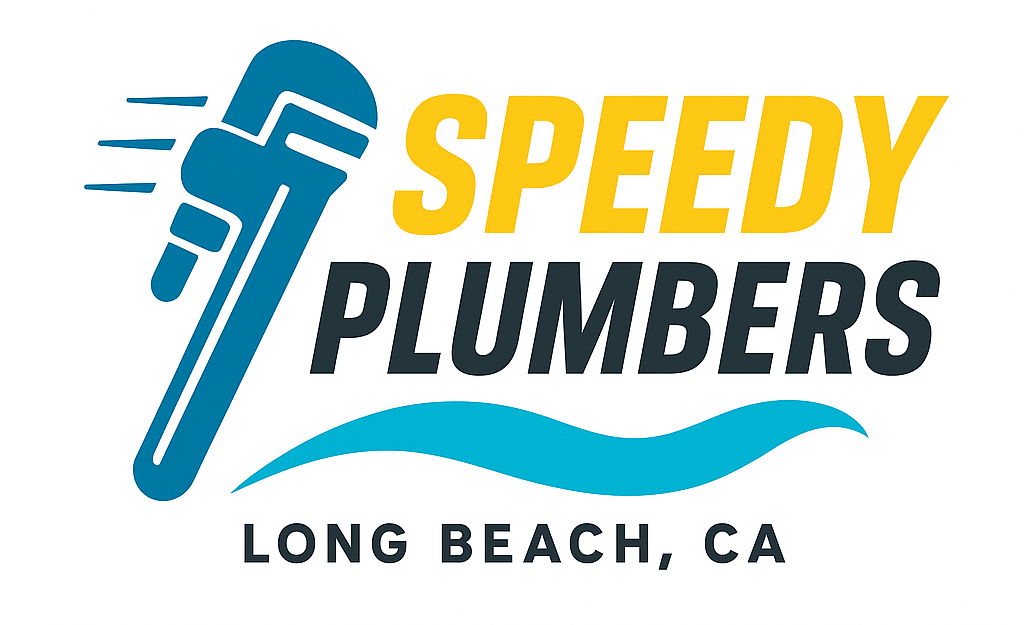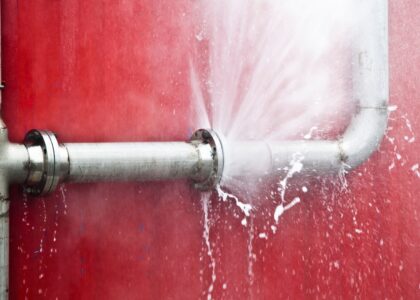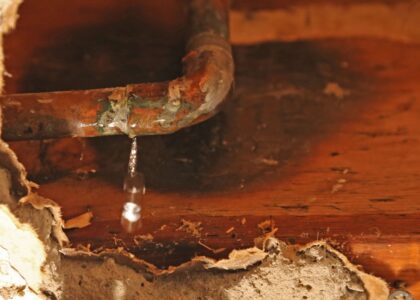Introduction
Now that you understand why leak detection matters (as discussed in Blog 1), let’s break down which types of leaks you might run into. Each leak type has its own challenges in detection and repair — knowing them helps you understand what the pros do.
Common Leak Types
1. Slab Leaks
- Occur under concrete floors or foundations
- Often caused by pipe corrosion, shifting soil, or poor installation
- Symptoms include warm spots on the floor, cracks in slab or tile, or sudden spikes in water usage
2. Wall / In-wall Pipe Leaks
- Pipes hidden in walls may leak from fittings or pinhole cracks
- Signs: bubbling paint, peeling wallpaper, damp walls
- Very tricky to locate without tools
3. Underground / Exterior Leaks
- Leaks in yard water lines, irrigation, or exterior plumbing
- Indicated by soggy spots in lawn, sinkholes, or pressure loss
- Detection often requires acoustic or tracer methods
4. Appliance & Fixture Leaks
- Faucets, toilets, water heaters, washing machines
- Easier to spot but often overlooked
- These are typically the first suspects when you detect unexpected moisture
Why Each Type Requires a Different Strategy
| Leak Type | Best Detection Method | Main Challenges |
|---|---|---|
| Slab leaks | Acoustic listening, slab probe, tracer gas | Hard to access, avoid disrupting slab |
| In-wall leaks | Thermal imaging, moisture meter, listening | Walls hide leaks, multiple possible paths |
| Underground leaks | Ground microphone, tracer gas, pressure test | Soil variances and interference |
| Appliance leaks | Visual inspection, pressure test | Easy to repair but can be misdiagnosed |
Often, a well-trained technician combines methods to triangulate the leak.
When DIY Detection Works — and When It Doesn’t
You can do some preliminary checks:
- Use the water meter trick (shut off everything, see if meter moves)
- Inspect around appliances and visible plumbing
- Check for damp patches, mold, or odor
But for hidden, underground, or slab leaks, professionals with detection tools are the reliable option. That’s when using the services on our Leak Detection page becomes essential.
Case Study: Spotting a Slab Leak
Imagine you own a Long Beach home sitting on a concrete slab. Your water bills keep climbing, but no faucet leaks. You notice the tile floor feels warm near the bathroom. A plumber uses acoustic listening devices and thermal imaging to detect an anomaly underneath the slab — precisely where the hidden pipe is leaking. Then a small core is drilled to access the pipe and repair it. Minimal damage, accurate location, and total resolution.
Because you recognized signs early (from Blog 1), the cost and disruption were much less.
How This Post Leads to the Next
We’ve covered what types of leaks can occur and how they differ in behavior and detectability. In our next installment, we’ll dig into modern leak detection technologies — how acoustic, infrared, tracer gas, and other high-tech tools pinpoint leaks faster and more accurately than ever.
Still need help? Go ahead and check out our main Leak Detection page or get in touch via Contact Us.
Conclusion
Understanding the type of leak is key to fast and effective repair. Are you dealing with:
- Hidden slab leaks?
- In-wall leaks?
- Underground irrigation line leaks?
- Appliance/fixture leaks?
Each calls for the right detection method. If you suspect any of these in your home, your best move is a professional evaluation.
Next up, Blog 3 will explore the cutting-edge tools used in leak detection — and when they’re applied.



